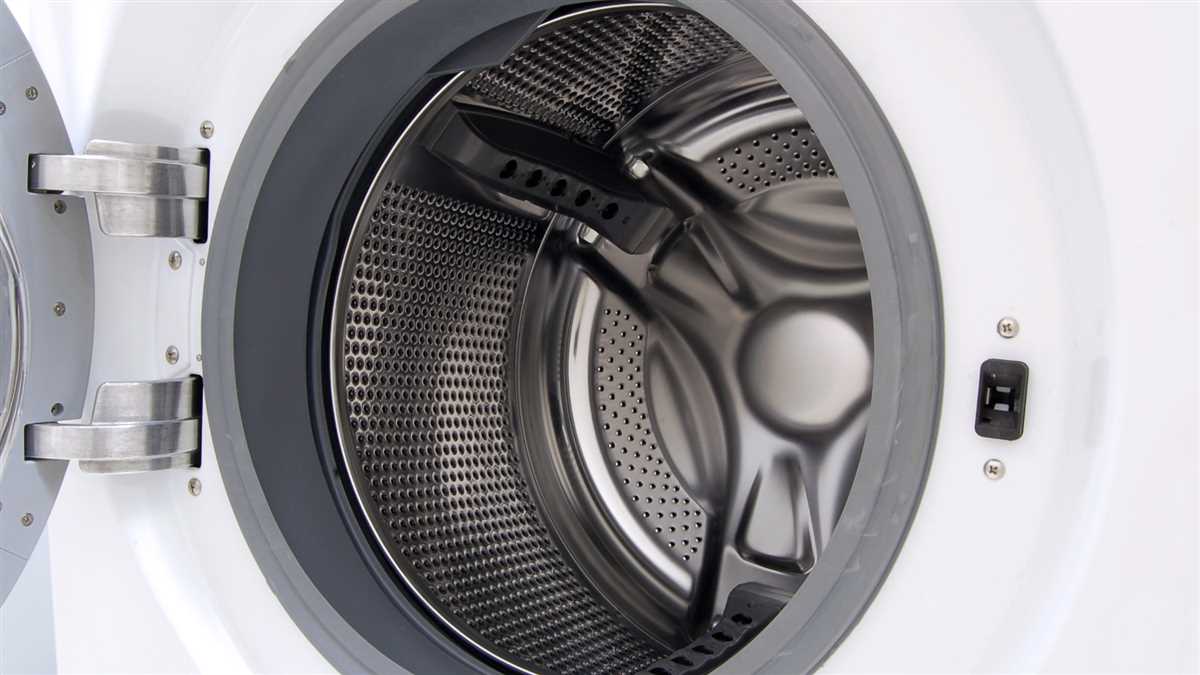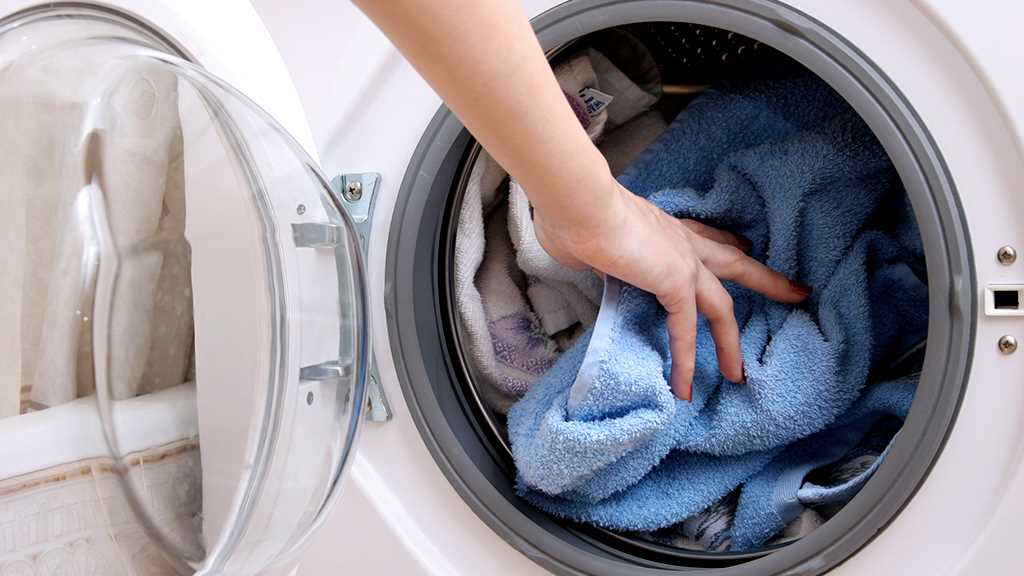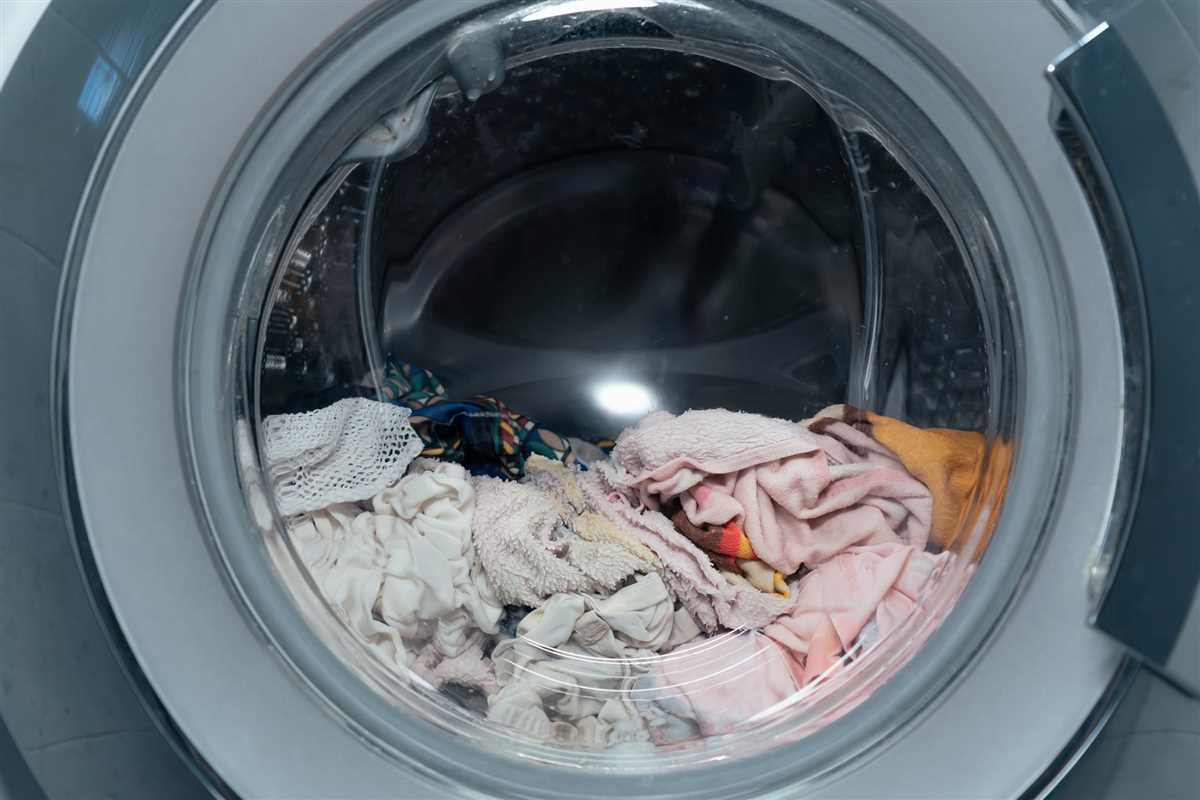




If your washing machine is not spinning, it can be frustrating and inconvenient. However, before you panic and call a repair service, it’s worth checking some common causes and trying some easy solutions yourself. In this article, we will explore the most common reasons why a washing machine may not be spinning and provide you with some simple troubleshooting steps to get your machine back up and running.
One common cause of a washing machine not spinning is an unbalanced load. When the load inside the machine is unevenly distributed, it can prevent the drum from spinning properly. To fix this, try rearranging the clothes inside the machine, making sure that they are distributed evenly. You can also try removing some of the clothes to lighten the load.
Another possible cause of a washing machine not spinning is a faulty lid switch. The lid switch is a safety feature that prevents the machine from spinning when the lid is open. If the lid switch is broken or not functioning properly, it can cause the machine to not spin. Check the lid switch for any visible damage or loose connections. If necessary, replace the lid switch to solve the problem.
In some cases, a clogged drain pump can be the reason why your washing machine is not spinning. The drain pump removes water from the machine during the spin cycle, and if it becomes clogged with debris or objects such as coins or hairpins, it can cause the machine to stop spinning. To fix this, locate the drain pump and remove any visible debris. If the pump appears to be damaged or not functioning correctly, it may need to be replaced.
These are just a few common causes and easy solutions for a washing machine not spinning. Remember, if the issue persists or you are unsure how to proceed, it’s always best to consult a professional repair service. They will be able to diagnose the problem accurately and provide you with the necessary repairs.
Common Causes of Washing Machine Not Spinning

1. Faulty lid switch: One of the common causes of a washing machine not spinning is a faulty lid switch. The lid switch is a safety feature that prevents the washer from spinning when the lid is open. If the lid switch is not working correctly, it may not engage properly and prevent the washer from spinning.
2. Broken belt: Another possible cause of a washing machine not spinning is a broken belt. The belt is responsible for connecting the motor to the drum, and if it breaks or becomes worn out, it will not be able to spin the drum.
3. Motor coupling issue: The motor coupling is a device that connects the motor to the transmission. If the motor coupling is broken or worn out, the motor will not be able to spin the drum.
4. Faulty motor: A faulty motor can also cause the washing machine not to spin. If the motor is defective or has burned out, it will not be able to generate the necessary power to spin the drum.
5. Clogged drain pump: A clogged drain pump can also prevent the washing machine from spinning. If the drain pump is clogged with debris or foreign objects, it will not be able to drain the water properly, causing the machine to stop spinning.
6. Overloaded machine: Overloading the washing machine with too many clothes can also cause it to not spin. When the machine is overloaded, the weight of the clothes can put extra stress on the motor and prevent it from spinning properly.
7. Unbalanced load: Sometimes, an unbalanced load can cause the washing machine not to spin. If the load is unevenly distributed in the drum, it can throw the machine off balance and prevent it from spinning.
8. Control board issue: A malfunctioning control board can also be a possible cause of a washing machine not spinning. If the control board is not sending the proper signals to the motor and other components, it may prevent the machine from spinning.
9. Faulty clutch: The clutch is responsible for engaging and disengaging the transmission. If the clutch is faulty, it may not be able to engage properly and prevent the machine from spinning.
10. Timer issue: Finally, a faulty timer can also cause the washing machine not to spin. If the timer is not advancing correctly or is stuck, it may not engage the necessary components for the machine to spin.
It is important to note that troubleshooting and fixing these issues should be done by a qualified technician to ensure safety and proper repairs.
Faulty Drive Belt

A faulty drive belt is one of the common causes of a washing machine not spinning. The drive belt is responsible for transferring power from the motor to the drum, allowing it to spin. If the belt is damaged or worn out, it may cause the drum to not spin properly or not spin at all.
Here are some common signs that indicate a faulty drive belt:
- The drum doesn’t spin at all.
- The drum spins slowly or intermittently.
- You hear a squealing or grinding noise during the cycle.
To check if the drive belt is faulty, you can visually inspect it. Here’s how:
- Unplug the washing machine and locate the drive belt.
- Inspect the belt for any signs of damage, such as cracks, fraying, or stretching.
- If the belt looks worn out or damaged, it needs to be replaced.
Replacing the drive belt is relatively straightforward and can usually be done by removing a few screws or clips to access the belt and then installing a new one in its place. However, it’s recommended to consult the washing machine’s manual or seek professional help for specific instructions on your model.
Once you’ve replaced the drive belt, test the washing machine to see if the issue has been resolved. If the drum now spins properly, the faulty drive belt was indeed the cause of the problem.
It’s important to note that if the drive belt keeps getting damaged or worn out frequently, there may be an underlying issue with the machine’s motor or pulley system. In such cases, it’s best to contact a professional technician to diagnose and fix the problem.
Clogged or Faulty Drain Pump

If your washing machine is not spinning, one of the common causes could be a clogged or faulty drain pump. The drain pump is responsible for removing water from the washer during the spin cycle, and if it is clogged or malfunctioning, the machine may not spin.
To check if the drain pump is clogged, you can follow these steps:
- Start by unplugging the washing machine from the power source to ensure your safety.
- Locate the drain pump, which is typically located at the bottom of the machine.
- Remove any accessible debris or lint that may be clogging the drain pump. It’s common for small items like coins, buttons, or lint to get stuck in the pump.
- Once you have cleared any visible obstructions, try running a test spin cycle to see if the machine operates normally.
If clearing the drain pump doesn’t solve the issue, it is possible that the pump itself is faulty. In this case, you may need to replace the drain pump entirely. You can usually find a drain pump replacement online or at a local appliance repair shop. Make sure to consult the user manual or seek professional help to ensure you choose the correct replacement part for your specific washing machine model.
Remember, if you are unsure about handling the drain pump yourself or if the issue persists even after cleaning or replacing the pump, it’s always best to contact a professional repair service for further assistance.
Malfunctioning Lid Switch

The lid switch is an important component in a washing machine that detects whether the lid is closed or open. If the lid switch malfunctions, it can cause the washing machine to not spin. Here are some common issues with the lid switch and possible solutions:
- Lid switch is loose: If the switch is loose, it may not make proper contact when the lid is closed. Check if the lid switch is securely attached to the washing machine. If it is loose, tighten the screws or brackets holding it in place.
- Lid switch is broken: Over time, the lid switch may become worn out or damaged, causing it to not function properly. Inspect the lid switch for any signs of damage or wear. If the switch is broken, it will need to be replaced with a new one.
- Lid switch actuator is faulty: The lid switch actuator is a small piece that is responsible for activating the switch when the lid is closed. If the actuator is faulty or misaligned, it may not press down on the switch correctly. Inspect the actuator and ensure it is in good condition and aligned properly. If it is damaged or misaligned, it will need to be replaced.
- Wiring or connection issues: Sometimes, the problem may lie in the wiring or connections related to the lid switch. Check the wiring and connections for any signs of damage or loose connections. If any issues are found, repair or replace the wiring or connections as necessary.
If you are unsure about how to diagnose or fix issues with the lid switch on your washing machine, it is recommended to consult the manufacturer’s guide or contact a professional technician for assistance.
Defective Motor Coupling

A defective motor coupling is a common cause of a washing machine not spinning. The motor coupling connects the motor to the transmission. If it is worn or broken, the motor will not be able to spin the drum.
Here are some signs that your motor coupling may be defective:
- The washing machine fills with water, but the drum does not spin.
- You hear a loud banging or grinding noise during the wash or spin cycle.
- The motor runs, but the drum does not move.
If you suspect a defective motor coupling, here are some steps you can take:
- Disconnect the washing machine from the power supply.
- Locate the motor coupling, which is usually located between the motor and the transmission.
- Inspect the coupling for any signs of damage or wear. Look for cracks, fraying, or broken pieces.
- If the coupling is damaged, you will need to replace it with a new one.
Replacing a motor coupling is a relatively simple process that can often be done at home. However, if you are not comfortable doing it yourself, it is best to call a professional technician to avoid any further damage to the washing machine.
Unbalanced Load or Overloading

One common cause for a washing machine not spinning is an unbalanced load or overloading. When you put too many clothes in the washing machine or if the load is unevenly distributed, it can cause the machine to become unbalanced during the spin cycle. This can lead to the machine not spinning properly or not spinning at all.
To fix this issue, follow these steps:
- Open the washing machine and remove some clothes if you have overloaded it.
- Try redistributing the load evenly inside the drum. Make sure the clothes are spread out evenly to avoid an unbalanced load.
- Restart the washing machine and see if it spins properly now.
If the load was the culprit causing the unbalanced spin, these steps should solve the issue. However, if the problem persists, there might be a problem with the washing machine’s suspension system or other mechanical issues that require a professional inspection and repair.
FAQ
Why is my washing machine not spinning?
There are several possible reasons why your washing machine is not spinning. It could be due to a faulty lid switch, a broken drive belt, a malfunctioning motor, a clogged drain hose, or a problem with the control board. It’s best to troubleshoot each possibility to determine the exact cause.
What should I do if my washing machine is not spinning?
If your washing machine is not spinning, there are a few steps you can take to try and resolve the issue. First, check if the lid switch is functioning properly by testing it with a multimeter. If the lid switch is defective, it will need to be replaced. You should also inspect the drive belt for any signs of damage or wear. If the belt is broken, it will need to be replaced as well. Additionally, make sure the motor is running as it should and check for clogs in the drain hose. Finally, if none of these solutions work, the control board may need to be replaced.
Can I fix my washing machine’s spinning issue myself?
In some cases, you may be able to fix your washing machine’s spinning issue yourself. If you have some basic DIY skills and the necessary tools, you can try troubleshooting the different potential causes of the problem. However, if you are unsure or uncomfortable with the process, it’s best to consult a professional technician. They will have the expertise and experience to properly diagnose and repair the issue.
How much does it usually cost to repair a washing machine that won’t spin?
The cost of repairing a washing machine that won’t spin can vary depending on the specific cause of the problem and the cost of replacement parts. On average, a simple fix such as replacing a lid switch or drive belt can cost around £50-£100, including the cost of the parts and labour. However, if the issue is more complex and requires replacing the motor or control board, the cost can range from £150-£300 or more.
Is it worth repairing a washing machine that won’t spin?
Whether it’s worth repairing a washing machine that won’t spin depends on a few factors, such as the age and condition of the machine, the cost of the repair, and the cost of a new washing machine. If the machine is relatively new and the cost of the repair is reasonable, it may be worth fixing. However, if the machine is old and the repair cost is high, it may be more cost-effective to invest in a new washing machine instead.
Why is my washing machine not spinning?
There can be several reasons why your washing machine is not spinning. It could be due to a problem with the motor, a faulty belt, a clogged pump, or a malfunctioning lid switch. It is best to troubleshoot the issue to determine the exact cause.












